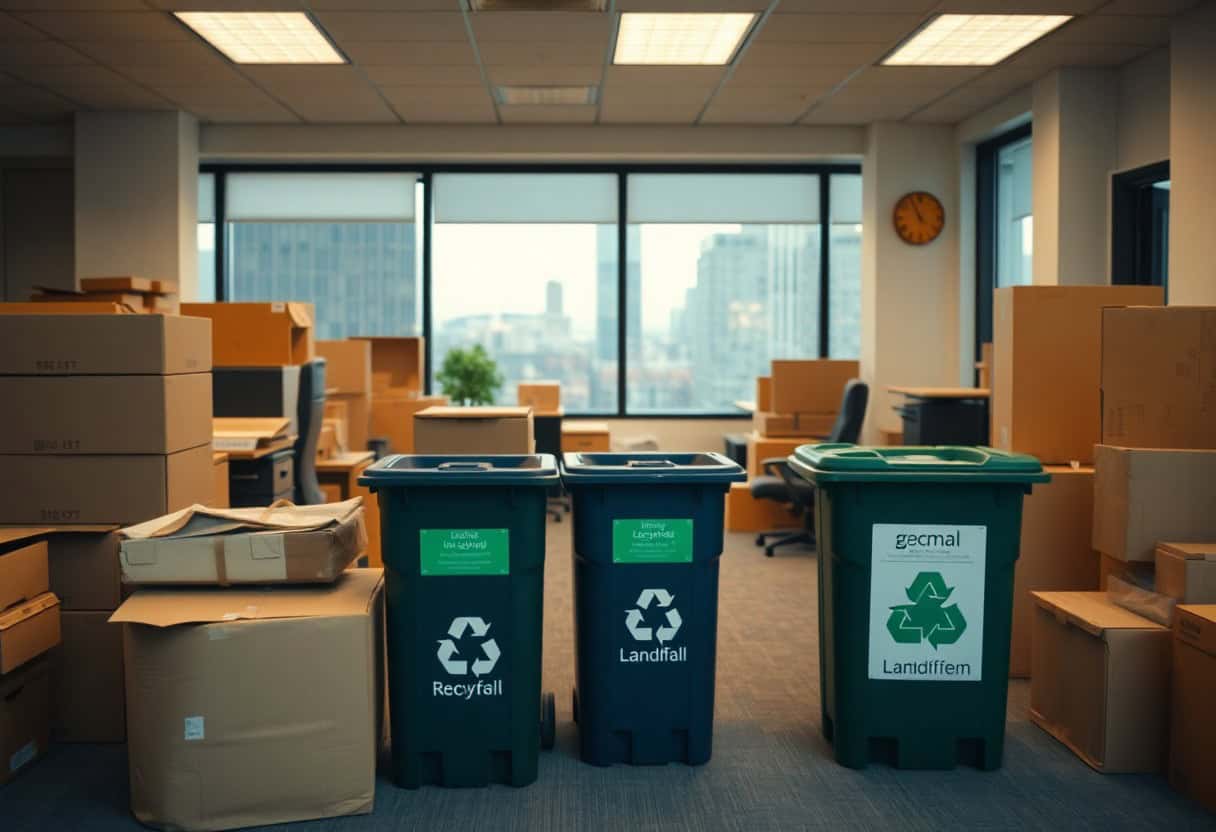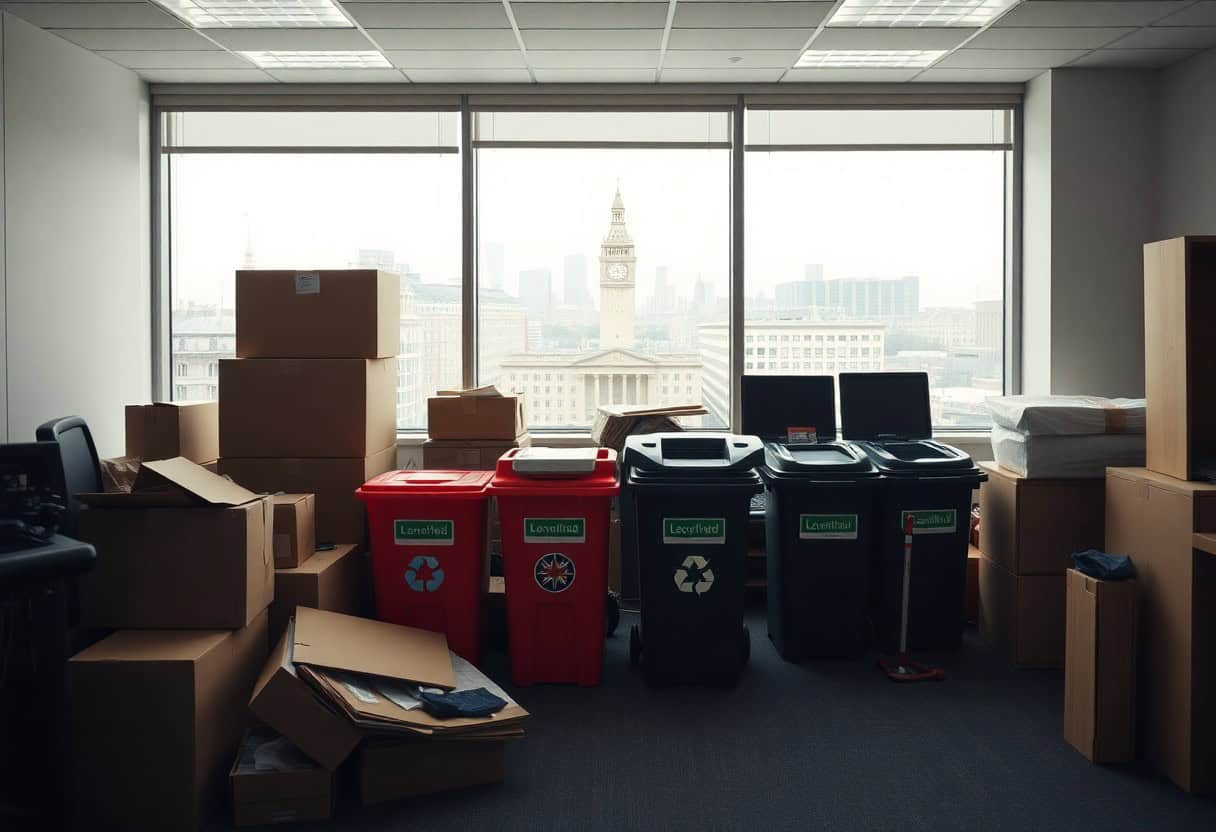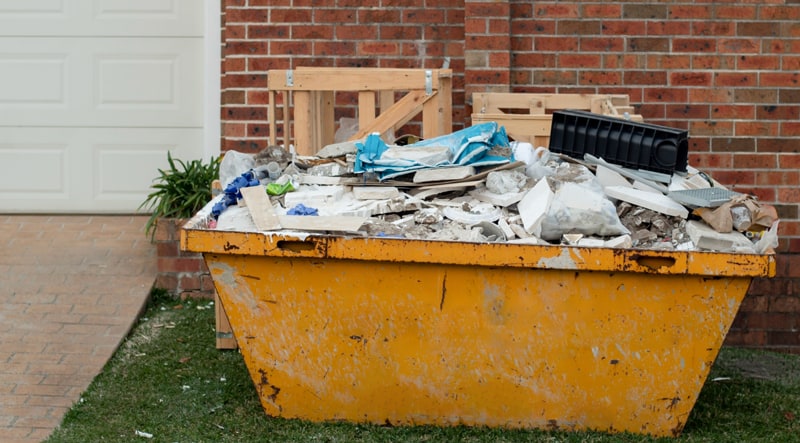Many people underestimate the importance of adhering to office clearance regulations in London, which can lead to serious legal and financial consequences for your business. Understanding these regulations is paramount for ensuring that your office clearance is not only efficient but also compliant with local laws. You should be aware of factors such as waste disposal methods, licensing requirements, and the potential risks associated with hazardous materials. This simple guide will provide you with the necessary information you need to navigate these regulations effectively.

Understanding Office Clearance Regulations
Before launching on an office clearance, it is important to familiarise yourself with the relevant regulations in London. Compliance ensures not only the safety of your employees but also adherence to legal requirements. For a comprehensive guide, refer to A Deep Dive into UK Office Space Standards and Guidelines which outlines key information regarding proper disposal methods and your responsibilities.
Types of Office Clearance
Now, office clearances can vary greatly based on your specific needs. Here’s a breakdown of the main types of office clearance:
| General Office Clearance | Removes unwanted furniture, equipment, and clutter. |
| IT Equipment Clearance | Ensures proper disposal of electronics and data protection. |
| Confidential Waste Clearance | Involves secure shredding and disposal of sensitive documents. |
| Renovation Clearance | Clears out spaces for building renovations or alterations. |
| Event Clearance | Cleans up after corporate events or exhibitions. |
Thou should consider these types when planning your office clearance to ensure all aspects are covered efficiently.
Key Regulations to Consider
With various regulations in place, it’s important to understand what applies to your office clearance. The Environmental Protection Act outlines your duty of care for waste disposal, while health and safety regulations ensure the safety of everyone involved. Compliance with the Data Protection Act is also vital when handling sensitive information during the clearance process.
Understanding these regulations, such as the necessity of obtaining appropriate licencing for waste carriers and the importance of proper waste segregation, can protect you from potential fines or legal issues. You must ensure that all your cleared items are disposed of in compliant ways, prioritising environmental sustainability and employee safety. The implications of ignoring these regulations can lead to severe repercussions for your business, including hefty fines, making it imperative to approach office clearance with caution and preparedness.

Step-by-Step Office Clearance Process
Some key steps ensure an efficient office clearance. Begin by assessing your space and creating an inventory of items to clear out. Consult A Useful Guide For a Stress-Free and Simple Office Relocation for tips. Below is a simplified breakdown of the process:
| Step | Description |
| 1. Planning | Draft a comprehensive clearance plan. |
| 2. Execution | Begin the clearance, ensuring safety. |
| 3. Disposal | Sort items for recycling or disposal. |
Planning Your Office Clearance
There’s no substitute for thorough planning before starting your office clearance. You should create a timeline, specify the roles of each team member, and identify how you will handle sensitive materials. This preparation will streamline the process and mitigate stress.
Executing the Clearance
One of the most vital stages is executing the clearance efficiently. Begin by removing non-important items whilst ensuring that you observe all relevant health and safety regulations. It’s important to provide clear instructions to your team, establishing a well-structured approach to avoid any chaos.
Another point to highlight is the importance of protecting confidential information during the clearance. Safely handle documents containing sensitive data by either shredding or securely disposing of them. Additionally, you should be aware of any hazardous materials present, ensuring that you follow appropriate disposal guidelines to maintain safety and avoid potential legal complications.
Tips for a Successful Office Clearance
You should approach your office clearance with a well-prepared plan to ensure efficiency and compliance with regulations. Consider these tips:
- Assess your office assets carefully.
- Prioritise recycling and waste disposal.
- Notify staff in advance about the clearance.
- Document everything for insurance purposes.
- Choose a reliable clearance company.
Thou will find that a well-structured approach significantly eases the process.
Choosing the Right Clearance Company
Some factors are crucial when selecting the appropriate clearance company for your office. Look for companies with reputable experience, positive customer feedback, and the necessary licences and certifications. Ensuring they have the right insurance coverage to protect your assets during the clearance is also important.
Best Practices for Office Clearance
Little attention to detail can make a significant difference during your office clearance. Ensure that you categorise items effectively, separating those for donation, recycling, and disposal. This will not only streamline the process but also help you handle hazardous materials safely.
The best practices for office clearance involve creating a detailed list of items to be removed, which should include both furniture and equipment. Knowing what can be reused or recycled effectively reduces waste and enhances sustainability efforts. Always consider the potential environmental impacts of your disposal methods, and ensure that any hazardous materials are appropriately managed to prevent accidents. Thus, your commitment to a responsible clearance will reflect positively on your business’s reputation.
Factors Influencing Office Clearance
Keep in mind that several factors can significantly affect your office clearance process. These include:
- Size of your office space
- Type of furniture and equipment
- Environmental considerations
- Local regulations
- Disposal methods
Recognising these elements can help streamline your office clearance project.
Size and Type of Office
Assuming you have a larger office space, the scale of your clearance will be more extensive, requiring proper planning. The type of office furniture, from desks to chairs, will also determine the number of resources needed for disposal. Efficiently managing these aspects ensures a smoother clearance process.
Environmental Considerations
One critical aspect you should take into account is the environmental impact of your office clearance. The disposal of items must adhere to local regulations to protect the environment.
Influencing your clearance approach, the management of electronic waste, furniture, and recyclable materials is vital. Improper disposal can lead to pollution and legal penalties. By making informed choices about recycling and donating items, you contribute positively to environmental sustainability. It’s imperative to engage with professional services that emphasise eco-friendly practices, thus ensuring a responsible clearance that aligns with today’s environmental standards.
Pros and Cons of Office Clearance
Now, understanding the pros and cons of office clearance can help you make informed decisions for your business. Here’s a quick breakdown:
| Pros | Cons |
|---|---|
| Increases workspace efficiency | Can be costly |
| Improves employee morale | Time-consuming process |
| Enhances company image | Potential for waste disposal issues |
| Allows for better organisation | Disruption to daily operations |
| Opportunity for sustainable disposal | May require professional help |
Advantages of Professional Clearance Services
Assuming you opt for professional clearance services, you will benefit from their expertise in handling all aspects of the clearance process. This includes efficient sorting, removal, and responsible disposal of waste. Professionals can save you time and reduce the burden on your staff, allowing everyone to focus on their primary responsibilities. Moreover, they are knowledgeable about recycling regulations, ensuring compliance and sustainability.
Disadvantages and Challenges
Some challenges may arise when considering office clearance. While professional services offer many advantages, they can also present drawbacks. You may encounter unexpected costs or delays, particularly if the scope of clearance expands during the project. Additionally, there could be *important* items or documents that might inadvertently be removed if not clearly marked, which may cause disruptions to your operations.
Challenges in office clearance often stem from the potential for *miscommunication* with service providers. It is important to clearly outline your requirements to avoid any surprises. There might also be a lack of *awareness* regarding hazardous materials, as improperly handling items can lead to *dangerous* situations and legal repercussions. To mitigate these issues, thorough planning and ongoing communication with the clearance team are imperative, ensuring that your clearance process is as smooth as possible.
Frequently Asked Questions
To help you navigate the complexities of office clearance regulations in London, we’ve put together a list of common queries. If you seek an in-depth understanding, check out The Comprehensive Guide to Office Clearance in London.
Common Concerns About Office Clearances
Concerns regarding office clearance often stem from the uncertainty about regulations and potential environmental impacts. Many worry about legal consequences, proper disposal methods, and ensuring compliance with local waste management policies.
Tips for First-Time Clearers
Little steps can make your first office clearance much smoother. Here are a few tips:
- Plan your clearance ahead of time.
- Hire a reputable clearance company.
- Identify items for donation, recycling, or disposal.
- Compliance with local regulations is key.
- Document the process for reference.
This will help you manage your project efficiently and avoid potential pitfalls.
About preparing for your office clearance, ensure you consider these important details:
- Research legal requirements beforehand.
- Communicate with your team for effective sorting.
- Utilise professional services for large clearances.
- Prioritise eco-friendly disposal methods.
- Make arrangements for data protection.
This attention to detail will facilitate a smooth and responsible office clearance process.
To wrap up
Presently, understanding office clearance regulations in London is vital for ensuring compliance and smooth operations. You should familiarise yourself with the legal requirements concerning waste disposal, environmental considerations, and documentation practices. By adhering to these guidelines, you can contribute to a cleaner environment while safeguarding your business against potential penalties. Being well-informed enables you to make responsible decisions during your office clearance process, ultimately promoting sustainability and efficiency within your organisation.
FAQ
Q: What are the Office Clearance Regulations in London?
A: The Office Clearance Regulations in London refer to the legal requirements and guidelines that govern the disposal of waste materials from office premises. These regulations ensure that waste is managed in an environmentally friendly manner and that businesses comply with local laws regarding waste disposal and recycling. This includes ensuring that hazardous materials are handled appropriately and that all waste is disposed of by licensed contractors.
Q: Are there specific laws that manage office clearance activities in London?
A: Yes, office clearance activities in London are governed by several laws, including the Environmental Protection Act 1990, which outlines duties of care for waste management. Additionally, the Waste (England and Wales) Regulations 2011 set out specific requirements for how waste should be handled and disposed of. Businesses must ensure they engage with licensed waste carriers and maintain accurate records of waste disposal.
Q: How do I ensure that my office clearance complies with the regulations?
A: To ensure compliance with office clearance regulations, businesses should hire a reputable waste management company that is licensed to carry waste. It is important to obtain a waste transfer note, which provides documentation of waste disposal. Additionally, businesses should conduct audits of their waste production and disposal practices annually to identify areas for improvement and ensure adherence to all relevant regulations.
Q: What types of waste are considered hazardous during office clearances?
A: Hazardous waste during office clearances can include items such as electronic waste (e-waste), fluorescent light bulbs, batteries, chemicals from cleaning supplies, and any material that presents a danger to public health or the environment. It is vital that such materials are handled by specialists who have the appropriate training and equipment to deal with hazardous waste safely and legally.
Q: What penalties can a business face for non-compliance with office clearance regulations?
A: Businesses that fail to comply with office clearance regulations may face several penalties, including fines, legal action, and potential closure for severe breaches. Additionally, businesses may be held liable for environmental damage caused by improper disposal of waste. It is therefore advisable for companies to adhere strictly to the regulations to avoid such consequences.


